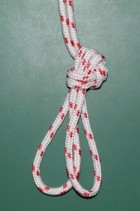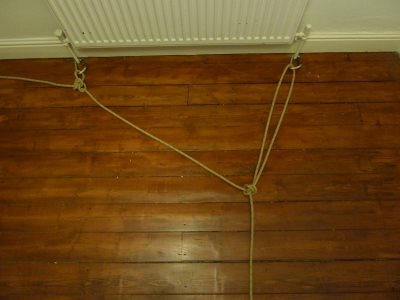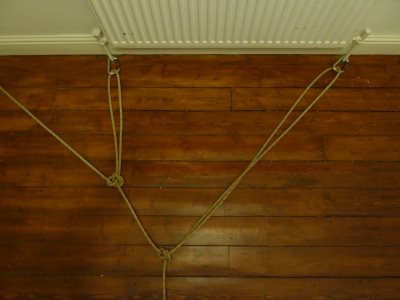I've always used an Alpine Butterfly for the Y hang. I like it because it's simple, easy to adjust and relatively fool-proof.
Having read all the stuff on the other two current threads about the various double loop knots, and supposed 'best-practice', I spent some time today experimenting, trying to work out what advantages these knots might have. Maybe I've missed something, but they don't seem to offer any worthwhile benefit and all three alternatives (Bowline-on-the-bight, Fusion Knot, Bunny Ears) have the same major drawback, which is that with an asymmetric hang they can easily slip sideways and leave your main hang with a rub-point.
This is not a theoretical problem, I've seen it happen, as I think have many others. In the instance I witnessed, the rigger was a light youth and the second man down, who was of stouter build, had a very alarming moment when he put his weight on the rope and saw the knot slip six inches. Now this was a sideways slip (not the French death slide), so he wasn't actually in any danger, but it left the hang off-centre and potentially rubbing. I think I was third man down so I had to reset it to make it safe. Maybe this wouldn't have happened with a 'properly dressed' knot, but I think it's best to avoid any knot that can create a potentially fatal situation by simply not being correctly tightened. The Alpine Butterfly doesn't seem to suffer this problem, so I'm going to stick with it.








